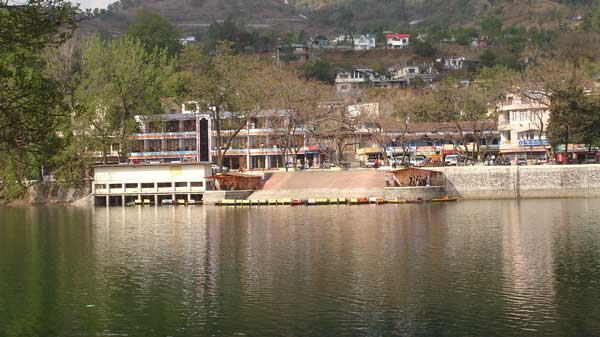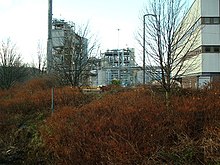
Dr. Ashok Kumar
The 25-year process patent regime allowed a large number of generic companies in India to reap rich dividends, but there were few who believed in the need to go beyond the horizon of process development to tap into unexplored terrains.
In the year 2000, when Dr Ashok Kumar joined the board of Mumbai-based IPCA Labs, he was determined to implement a different strategy to accelerate IPCA’s R&D initiatives. Having seen IPCA grow from a 350-crore company to one clocking an annual turnover of over 2,500 crore, Dr Ashok Kumar, president- Center for Research and Development, IPCA Labs, is now leaving no stone unturned to exploit the biotech and drug discovery space.

Dr Kumar completed his M Sc in Chemistry from Kumaun University, now in Uttarakhand. He then decided to pursue his PhD in organic chemistry and joined Banaras Hindu University (BHU), but opted out three months later to do PhD from the Central Drug Research Institute (CDRI), Lucknow, under the guidance of the then director of the CDRI, Dr Nityanand.
Dr Kumar did his post doctoral studies from the University of Sussex, UK. “During the 1980s, jobs in scientific research were not available in India. It was always good to go for higher studies abroad,” he says about the reason for going abroad. “Dr Nityanand taught me to be explorative and think of new ways to approach a subject. I still follow that process,” he says. In 1984, Dr Kumar decided to return to India and took up a job at the Imperial Chemical Laboratories (ICI), Mumbai. In 1994, he joined Lupin Labs where he was once again involved in process development of small molecules.
In 2000, he joined IPCA Labs where he immediately focused on bringing about two changes – introducing a library and bringing in systems like a nuclear magnetic resonance (NMR), which at that time was the costliest instrument. “I understood the importance of high-end technologies since my PhD years at the CDRI (which housed a couple of NMRs) and then in the UK. You do not enjoy organic chemistry without an NMR. My main objective at IPCA was cost reduction along with process development.”
In the last few years, IPCA’s R&D team has brought out over 100 products. Under Dr Kumar, IPCA has an R&D center in Mumbai and another parallel R&D center in Ratlam, Madhya Pradesh. “In Mumbai, we have around 60 people. The Mumbai team takes care of basic chemistry and small-scale development. Scaling up is done in Ratlam,” he explains. IPCA is also coming up with a facility at Vadodara, Gujarat, that will look into large-scale manufacture of both organic and biotech drugs. The facility will have a strategic importance for the company. “We are growing at a rate of 20 per cent year-on-year and, next year, we intend to add 500 crore to our revenue. For that, we need more products to come to the market and more volume,” he adds.
Apart from organic chemistry, Dr Kumar is currently aligning his attention to two promising but high risk segments – fermentation-based products and biosimilars. “We are working on five-to-six molecules, mainly active metabolites that are intermediates or biotech drugs,” he adds. IPCA has also collaborated with two companies in India for the development of biosimilars. Currently, there are three biosimilar products in the pipeline.
The R&D team at IPCA ventured into drug discovery three years ago. It has two products in the pipeline; one anti-malarial and the other anti-thrombotic. “We will be filing the investigational new drug application for one molecule this year and for the other next year. The success rate here is 99 per cent,” adds Dr Kumar. IPCA has also joined hands with the CDRI and licensed two molecules in the anti-malarial space. One of these molecules is currently in phase-I stage.

JOURNEY




Experience
PRESIDENT – R&D
IPCA LABORATORIES LTD
2005 – Present (10 years)
Patent 1
chlorthalidone is 3-hydroxy-3-(3′-sulfamyI-4′- chlorophenyl)phtalimidine and is represented by the structural formula shown below.
(Scheme 2). The starting material, 2-(4′-chlorobenzoyl) benzoic acid, of Formula (2) and its preparation was reported earlier for example in patents US 4500636, US 30555904, US4379092, US 3764664.
Formula 9 CIS03H
Chlorthalidone Formula 10 Formula 1
PATENT 2
https://www.google.co.in/patents/US7847094Quetiapine and its process for preparation is first disclosed in the patent specification EP0240228 and various other processes for the preparation are disclosed in EP0282236, WO0155125, WO9906381, WO2004076431.
PATENT 3
http://www.google.com/patents/US20080009635
. The chemical name of Ondansetron is 1,2,3,9-tetrahydro-9-methyl-3-[(2-methyl)-1H-imidazole-1-yl)methyl]-4H-carbazol-4-one and is represented by the structural formula given below:
PATENT 4




Chemical Research & Development Centre
123-AB, Kandivli Industrial Estate, Kandivli (West)
Mumbai 400 067, Maharashtra





Filed under: BLOGS, SPOTLIGHT, Uncategorized Tagged: Dr. Ashok Kumar, IPCA LABORATORIES LTD, PRESIDENT, R&D









